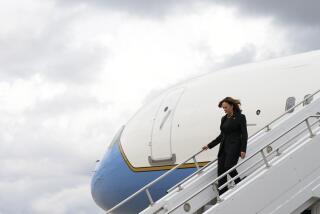Free Trade Looks South
Free trade has gotten a bad rap lately, but that hasn’t stopped negotiators from the United States and four Central American nations from completing a free-trade agreement. Accord with a fifth nation, Costa Rica, is still pending. If approved by Congress, the Central American Free Trade Agreement will be a logical geographic extension of the North American Free Trade Agreement, signed 10 years ago by the United States, Canada and Mexico.
The economic scope of the new agreement would be far more limited than NAFTA’s. After all, the combined gross domestic products of the five foreign nations in the pact is a modest $140 billion. Total trade among the three NAFTA partners, whose combined GDP is $11.4 trillion, was $621 billion in 2002. Even so, U.S. trade with Central America is larger than that between the U.S. and Russia, India and Indonesia combined.
Thanks to the latest Caribbean Basin Initiative, Central America already has preferential access to U.S. markets. CAFTA would, however, reduce tariffs and other barriers to U.S. goods and services in Guatemala, Honduras, El Salvador, Nicaragua and Costa Rica.
The “globalphobics” who oppose international economic integration are already gathering ammunition to oppose CAFTA. Unions, environmental groups and others argue that economic liberalization has cut U.S. wages by putting workers in competition with low-paid labor overseas.
Free trade has winners and losers. There are also loopholes in the system that allow powerful nations to unduly protect favored industries, and these should be addressed. But there is no turning back the clock to the days of high tariffs.
Protectionists once predicted Japan would overwhelm the United States with its cars, electronic goods and work-till-you-drop employees. In the end, consumers enjoyed cheaper, more efficient cars built in Japan -- and the U.S. automobile industry became more efficient and built better cars. Now the Japanese make Hondas in Ohio.
If CAFTA becomes reality, it should be structured so that sweatshops are not the chief new job opportunity in Central America. Environmental protections should prevent the chemical soups that pour from poorly regulated Mexican border plants. Cost pressure in the absence of regulation intensifies job flight from the United States.
Free trade is imperfect, but it is flexible and far more robust than the old, locked-up tariff system. The right choice is to improve it until it creates better jobs and opportunities on both ends of the deal.
More to Read
Sign up for Essential California
The most important California stories and recommendations in your inbox every morning.
You may occasionally receive promotional content from the Los Angeles Times.










